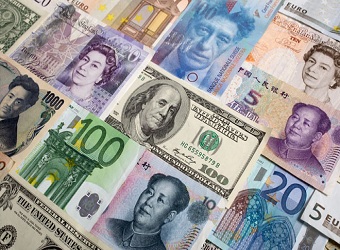The dollar edged up to a nine-day high against a basket of currencies on Thursday, with the euro sagging as the European Central Bank showed no sign of stepping away from monetary easing anytime soon.
The U.S. currency was up 0.3 percent at 111.385 yen, putting some distance between the four-month low of 110.110 it plumbed on Monday.
The euro dipped 0.2 percent to $1.0745, having drifted down from a 4-1/2-month high of $1.0906 scaled on Monday.
The common currency had dropped about 0.5 percent overnight following a report by Reuters that European Central Bank policymakers were wary of changing their policy message after tweaks this month had raised expectations of the central bank ending its super-easy policy and eventually hiking interest rates.
“The market may have gotten ahead of itself on its expectations towards the ECB ending its easy policy and the news helped temper such speculation,” said Junichi Ishikawa, senior FX strategist at IG Securities in Tokyo.
“That said, the ECB seems set on finding a way out of its easy policy, so it would be difficult for the euro to keep declining. It is no longer a case of the euro being sold on easy policy expectations, with German bund yields settled firmly in positive territory.”
The euro was boosted earlier in the month by a report that the ECB had discussed the possibility of raising interest rates before the end of its quantitative easing programme.
The pound inched up 0.1 percent to $1.2450 following choppy moves the previous day.
Sterling swung between $1.2478 and an eight-day low of $1.2377 on Wednesday before ending little changed, unable to find clear direction from Britain’s formal triggering of its exit from the European Union.
“We expect the triggering of Article 50 to initiate a ‘sell the rumor, buy the fact’ rebound in GBP from historic undervaluation as ambiguity over Brexit recedes,” currency strategists at Barclays wrote, saying the markets had overestimated the downside to the pound resulting from Brexit.
Others, however, saw downside risks to sterling amid potential upcoming political uncertainty and the possibility of Britain not being able to reach an exit deal with the EU during their two-year negotiation period.
HSBC sees the pound falling to $1.10 by the end of 2017 and the euro, currently around 86.40 pence, advancing to parity with sterling.
The dollar index against a group of major currencies was up 0.1 percent at 100.100 after rising overnight to 100.140, its highest since March 21.
The greenback was also boosted by Chicago Fed President Charles Evans, who said he was in line with most of his colleagues in supporting further rate hikes this year.
The dollar benefited as some of the dust began to settle after its tumble earlier in the week to 4-1/2-month lows.
The currency slumped on Monday after the U.S. House of Representatives pulled a bill to overhaul U.S. healthcare insurance, which knocked the wind out of the dollar-supportive Trump trade.
The Australian dollar lost 0.1 percent to $0.7665 and the New Zealand dollar slipped 0.2 percent to $0.7021 against the resurgent dollar.
Source: Reuters


